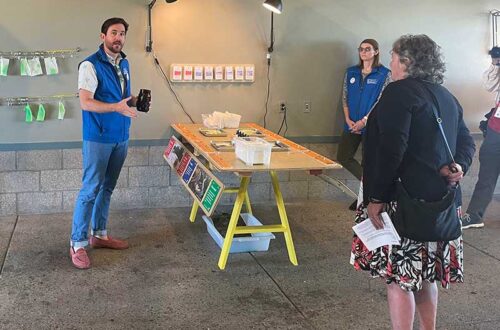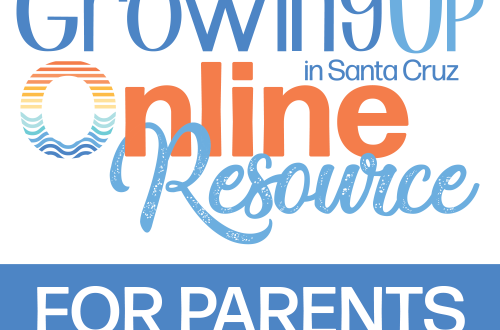Facing Anxiety as Schools Reopen
By Suki Wessling

Caught early, anxiety can be alleviated and treated. But as children continue to suffer, anxiety can take a toll on their physical, social, and academic health.
Before the pandemic, professionals were already sounding alarms about the state of our children’s mental health. Now with the return to school, parents, psychologists, and caregivers are concerned that the problem may have been exacerbated by long months of isolation.
Caught early, anxiety can be alleviated and treated. But as children continue to suffer, anxiety can take a toll on their physical, social, and academic health.
In this article, a variety of professionals weigh in to help parents identify, alleviate, and treat anxiety.
What should parents and caregivers look for to identify anxiety about returning to school?
Professionals say that anxiety often presents physical symptoms. The Santa Cruz County Behavioral Health Children’s Management Team directs parents to watch for apparently unrelated emotions, such as anger or annoyance, and physical symptoms like trouble sleeping, fatigue, headaches, or stomachaches. These symptoms can indicate that a child is anxious about school, but unable to make the connection or unwilling to talk about it.
“Much of the time underlying anxiety is revealed through physical expressions such as stomach aches, headaches, or irritability,” says Dr. Victoria Eagle, a child psychologist.
“Anxiety can present so differently from person to person, so it may end up looking like irritability or refusal,” says Harper Cheaney, a therapist who works with children and teens. “Even if the content seems unrelated (ie, a child wanting to be at home to play video games), it’s worth considering that a big transition back to school after a scary year may be behind the big feelings.”
The key is to watch for changes, behaviors that children didn’t exhibit before school attendance was imminent.
“Parents should be mindful of any changes in mood, behavior, or thought patterns,” says Eric Ochoa, Behavioral Health Director of Pajaro Valley Prevention and Student Assistance (PVPSA). “Some common examples include trouble sleeping, avoidance of school or other situations, substance use, and worry or fear that impacts functioning in school, home or with friends.”
Children may also revert to behaviors they had worked past before the pandemic, or show new behaviors that they didn’t get to work out at a typical age.
“Parents may notice their kids have difficulty separating from them after having been home with caregivers for the majority of last year,” says Dr. Sheilah Siegel, a clinical psychologist.
Dr. Siegel also points out that kids have been hearing a lot of parent concern about safety during the pandemic. Returning to a school—or attending for the first time—where safety measures are so prominent could lead them toward outsize anxiety about their own safety.
“Parents may also hear their kids expressing concerns about safety especially with increased social interaction,” she explains.
What can parents do to support their students who may be anxious?
As much as we might want to tell kids, ‘don’t worry about it,’ this is the wrong approach, experts say.
“It is important not to allow anxious children to completely avoid the very thing they feel anxious about,” explains Victoria Eagle. “Rather, validating their experiences of worry and fear and maintaining confidence in them that they can move forward.”
Plan to initiate open and supportive conversations with kids, listening to any concerns that they might have. A family brainstorming session can help devise ways to alleviate anxiety before school starts.
“Sometimes it can be helpful for parents to offer their children a transitional object like a keychain with a small stuffed animal or something they collected in nature like a shell or rock to remind their children of them,” suggests Sheilah Siegel.
And don’t forget to take care of your own needs, Harper Cheaney reminds us. “Young people feel and see how their parents feel and often internalize or absorb those feelings. Parents having their own sources of support can really help their child(ren) co-regulate with them during this transition.”
What should lead parents to seek professional help?
“When the child continues to exhibit intense symptoms, despite calm adult validation and support, it is often a good idea to consult with a psychotherapist for guidance,” Victoria Eagle explains.
Families can consult with other adults who spend time with the child to find out whether their behavior has raised red flags in school or other activities. Sometimes, children will be open about needing help. But others, not knowing that mental health care is an option, may deny that there’s a problem.
“Talking regularly about mental health and support is a good way to normalize asking for more care,” Harper Cheaney suggests. “If/when the time comes it may not feel so forced or shocking to a young person if needing help isn’t stigmatized.”
Your school itself might be a resource, so make sure to ask what services are available. “Resources should be available through schools and agencies like ours,” Eric Ochoa explains. “At PVPSA (pvpsa.org) we take school referrals and referrals directly from children and parents.”
The Santa Cruz County Behavioral Health Children’s Management Team recommends:
- Consult with a pediatrician first to rule out any underlying medical issues.
- If you have private insurance, call the member services number on the back of your insurance card to find local mental health providers.
- You can access community resources by calling 211 or on their website at www.211SantaCruzCounty.org.
For more information:
How to Receive Mental Health Services” from County Health: http://www.santacruzhealth.org/HSAHome/HSADivisions/BehavioralHealth/HowtoReceiveMentalHealthServices.aspx
“Returning to School: Supporting your child’s social/emotional wellness” tip sheet from Positive Discipline Community Resources: www.pdcrcc.org/tip-sheets
Suki Wessling is a local writer and teacher. Read more at www.SukiWessling.com.






